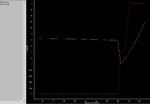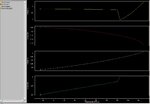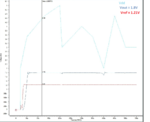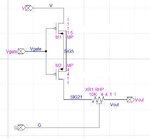ducvilla
Member level 3
Hi! Can somebody help me!
I am newbie on analog ic design. I have a problem with off-signal to shutdown the LDO circuit.
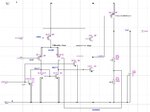
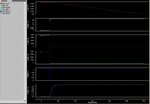
In my circuit, I think when Voff is high, then the transistor XM18 and XM19 is ON, then all other transistors is OFF, then the Vout should be 0V. But when i simulation, all are true except Vout is still high.
Firstly, i think because of charging of capacitor, but it is clear that the charging is only in instance.
Regard.
I am newbie on analog ic design. I have a problem with off-signal to shutdown the LDO circuit.


In my circuit, I think when Voff is high, then the transistor XM18 and XM19 is ON, then all other transistors is OFF, then the Vout should be 0V. But when i simulation, all are true except Vout is still high.
Firstly, i think because of charging of capacitor, but it is clear that the charging is only in instance.
Regard.
